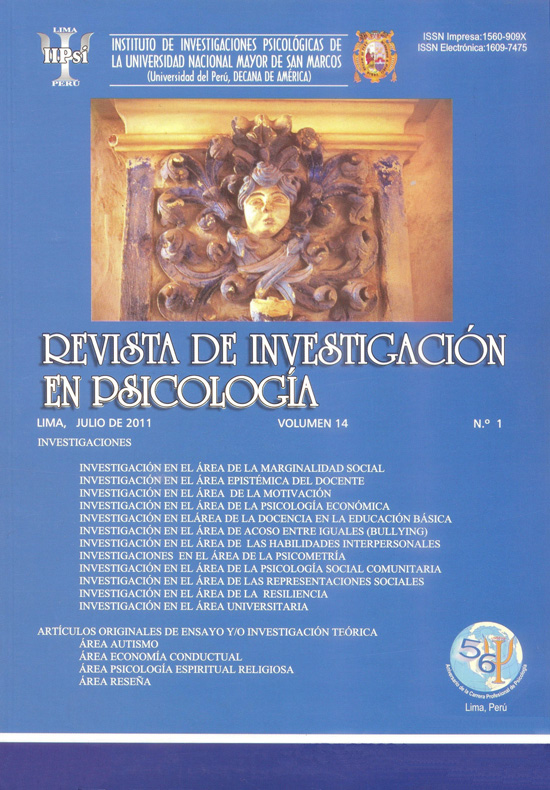Social representations of corruption and violence and its relationship with social moral reflection in young urban and rural areas of different regions of Peru
DOI:
https://doi.org/10.15381/rinvp.v14i1.2082Keywords:
socio-moralreflection, social representations, corruption, violence, youthAbstract
Research identified the social representations of corruption and violence and its relationship to levels of socio-moral reflection of young people in urban areas and rural country. We evaluated to 268 young people from urban and rural areas, of both sexes , aged between 18 and 25 years, developing focus groups to identify the social representations of corruption and violence and a questionnaire of socio-reflection proposed moral Gibbs, Arnold and Morgan and adapted by Grimaldo (2002). No significant relationship was found between socio-moral reflection and social representation of corruption and violence. There is a moral development mostly located in the interpersonal harmony ,while a third of the population is located in an instrumental relativist orientation and moral development level reached by youth for the pre-conventional and conventional. The levels of socio-moral reflection in Pucallpa be located in the Stage 2 (instrumental relativist orientation) while the other regions evaluated the Stage 3 ( interpersonal harmony orientation would be predominant. Corruption is a social practice of adaptation that allows orientation to interpersonal harmony , often have a pessimistic view about the possibility of eliminating them. The social representation of violence would be directly related to corruption, in the sense of giving greater value to the individual and immediate benefit to social welfare or collective.Downloads
Published
Issue
Section
License
Copyright (c) 2011 Carlos Arenas Iparraguirre, María Matalinares C., Victor Montero L., Eli Malvaceda E., Israel Rivera P., Elsa Sánchez Y.

This work is licensed under a Creative Commons Attribution-NonCommercial-ShareAlike 4.0 International License.
THE AUTHORS RETAIN THEIR RIGHTS:
a. The authors retain their trademark and patent rights, and also on any process or procedure described in the article.
b. The authors retain the right to share, copy, distribute, execute and publicly communicate the article published in the Journal of Research in Psychology (for example, place it in an institutional repository or publish it in a book), with acknowledgment of its initial publication in the Journal of Research in Psychology.
c. Authors retain the right to make a subsequent publication of their work, to use the article or any part of it (for example: a compilation of their work, lecture notes, thesis, or for a book), provided that they indicate the source. of publication (authors of the work, magazine, volume, number and date).






